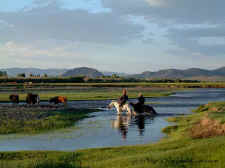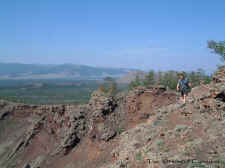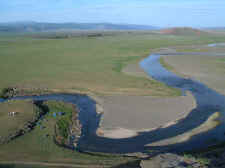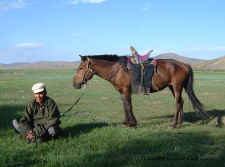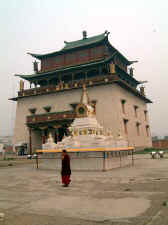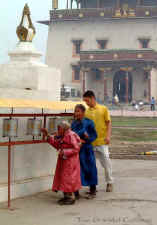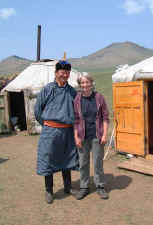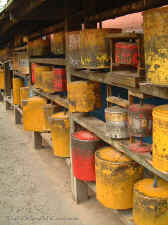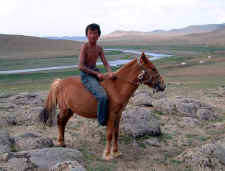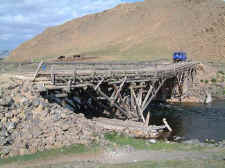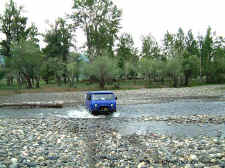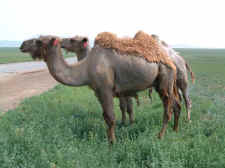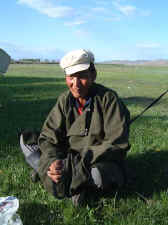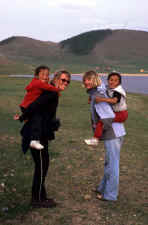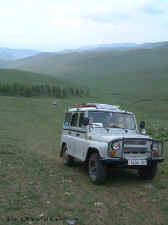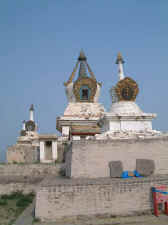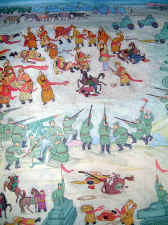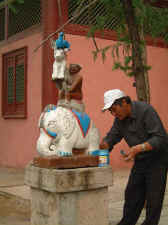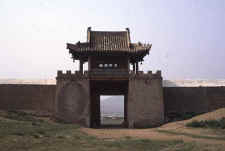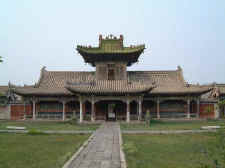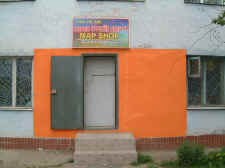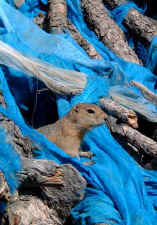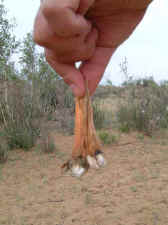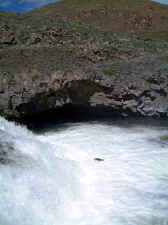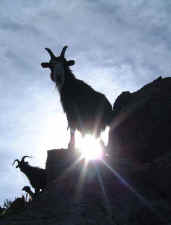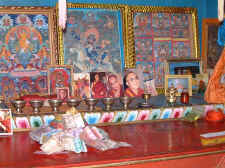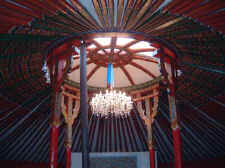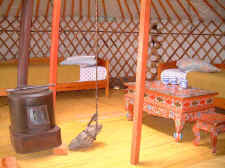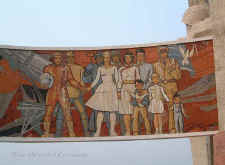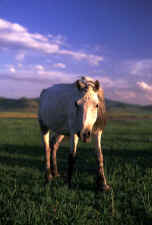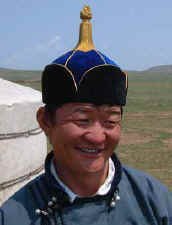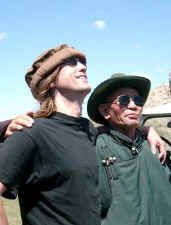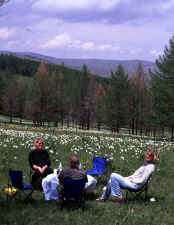
|
|
tel +44
(0)1424 88 35 70
Postcard from Mongolia...
click on any image to see it enlarged
| Summer 2003
Dear All, Landlocked between its two giant neighbours China and Russia, but culturally far, far removed from both, Mongolia is one of Asia's remotest travel destinations. It is also, as The Oriental Caravan has recently discovered, one of its most rewarding. The countryside is vast, unspoiled and utterly beautiful and the nomadic people who inhabit it, unforgettably welcoming to travellers.
|
|
|
Mongolia's history has certainly not been an easy one but today, after long periods of subjugation, first by the Manchu Chinese Empire and then by Soviet Russia, the country is once again truly independent. The effect of this newfound freedom is easy to find on the streets and in the monasteries of its delightful capital, Ulaan Bataar. Everywhere there seems to be a genuine enthusiasm and exuberance among the people that once again they are the masters of their own destiny. For the visitor this is without doubt a joy to behold not least because it would have seemed highly unlikely even a decade ago. |
| In a country three times the size of France it is amazing that Ulaan Bataar is the only city of any real size. There are other smaller towns but generally the rest of the country is made up of lush rolling grassland, Alpine mountains and meadows and in the south the arid Gobi desert. Once the traveller has left behind Ulaan Bataar's suburbs of gers (felt tents) he enters a nomadic world where the horse is still the preferred mode of transport and the rhythms of nature still direct much about everyday life. |
|
|
For the adventure traveller the freedom provided by such a landscape is a rare thing in the modern world. With so few roads and so much open country the driver merely turned the jeep in the direction we wanted to be heading and just started driving. The opportunities for wilderness camping in idyllic settings must rank as some of the best in the world. |
| For our journey we used a solid, reliable and surprisingly comfortable Russian 4x4 jeep and 'forgon' campervan which for most Mongolian drivers are preferable to the harder-to-fix Japanese vehicles. Our drivers were amazing - in 12 days only one minor mechanical problem (fixed in 10 minutes) and only stuck in the mud once - we were out in no time! |
|
|
After leaving Ulaan Bataar we first visited the ruins of the ancient capital of Karakorum. Hard to believe that from this remote location the world's largest empire was built and administered by the mighty Genghis Khan and his descendants. From Karakorum we continued via Tsetserleg and the classic Mongolian countryside of Arkhangai to the volcanic region around Terkhiin Tsagaan Nuur lake. |
Mongolian architecture comes in all shapes and sizes and says much about Mongolia's past and its hopes for the future. |
|
|
Mongolia is still blessed with a near pristine environment, and it's abundant animal life enjoys the freedom of the Steppes as much as its people - in particular Mongolia is a paradise for birdwatchers and 'flora-philes'. |
|
The Oriental Caravan's verdict on Mongolia? Fantastic! The researching and planning of next year's trip is already underway. We will be returning to some of the best loved destinations that we visited this year while also including a little more exploration by foot - as Mongolia's lakes, forests and mountains offer some great places to go trekking. If you'd like more information about the new itinerary and next year's group dates (or small group tailor-made departures) please get in touch either by email or by phone. In 3-4 weeks time the next e-postcard will bring you a 'snapshot' of The Oriental Caravan's two week trek through the Siberian Altai mountains - just 3 days north and west from Ulaan Baatar on the legendary Trans-Siberian Express. In the meantime, where ever you are, have a great summer.
With best wishes from, Phil and all aboard The Oriental Caravan |
|
|
| If you wuld like to comment on this postcard please enter your remarks in the space below. |
If you would like a friend or colleague to receive future mailings from The Oriental Caravan please enter their email address in the box below and click 'submit'...
